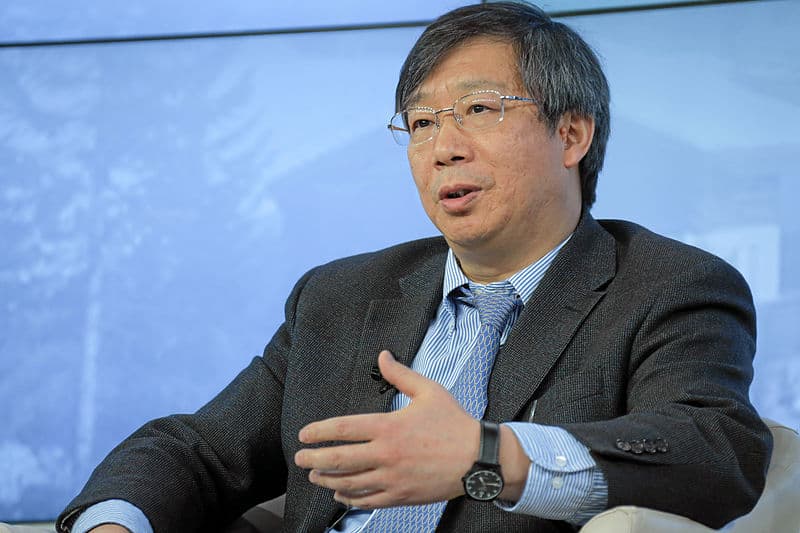The head of China’s central bank has signalled broad continuity in the key themes of Chinese monetary policy in 2019.
In an interview with state media Yi Gang (易纲), governor of the People’s Bank of China (PBOC), said that the Chinese central bank will further strengthen counter-cylical adjustments, as well as focus on alleviating factors which restrain credit supply of the real economy, and small and micro-enterprises in particular.
“[We] will work with relevant departments to accelerate the issuance of perpetual bonds by banks to bolster capital and improve the assessment benchmarks for targeted reserve ratio cuts directed at financial inclusion,” said Yi.
Yi pointed out that the latest round of required reserve ratio cuts unveiled just after the start of the new year are expected to release 1.5 trillion yuan in liquidity, while towards the end of January PBOC will also launch use of targeted medium-term lending facilities (TMLF).
“These measures will be of benefit to maintaining rationally ample liquidity and rationally stable rates on financial markets, guiding rational growth in money and credit,” said Yi.
“The vigour of the financial sector’s support for the real economy will not weaken following easing economic growth, but on the contrary its vigour will be expanded, which is demonstrative of counter-cyclical adjustments.”
With regard to monetary policy, Yi Gang said that “total quantities must be rational, structures must be optimised, and [we] must create a monetary and financial environment which is appropriate for supply-side structural reforms and high-quality growth.
“On the one hand, we must accurately grasp the total volume of liquidity, in order to prevent excessively rapid credit contraction causing shocks to the real economy, as well as avoid ‘flood-styl irrigation’ impacting structural deleveraging.
“For example, the required reserve ratio cuts we announced on 4 January that will be implemented on two occasions match the pace of pre-Chinese New Year cash releases, and is not at all flood-style irrigation.
“M2 and total social finance growth will also be kept largely in line with nominal GDP growth, and it is necessary to maintain basically stable macro-leverage.
“On the other hand, we must accurately grasp the direction of liquidity, and employ the role of structured monetary policy and targeted irrigation.
“While adjusting total quantities, we must also invest effort into strengthening the vitality of micro-economic actors…for example, during the Central Economic Work Conference, PBOC announced the launch of targeted medium-term lending facilities, that will provide a long-term stable source of funds to financial institutions based on the growth of their loans to small and micro-enterprises and private enterprises.”
Figures cited by Yi Gang indicate that the financial inclusion small and micro-entterprise loan balance was 7.8 trillion yuan as of the end of November 2018, for YoY growth of 17.1%.
Small and micro-enterprise credit had been provided to 18.06 million businesses, for a rise of 28% compared to the end of 2017.
Bond financing by the private sector has also seen marked improvement, with bond issuance by private enterprises seeing YoY growth of 70% in November and December last year.
“This year, PBOC will make comprehensive use of multiple monetary policy tools in accordance with the arrangements of the Central Economic Work Conference, including targeted reserve cuts, refinancing and rediscounting, and targeted medium-term lending facilities…we will implement targeted irrigation of small and micro-enterprises, make effective use of the ‘three arrows’ of loans, bonds and equity to support private enterprise in resolving their financing difficulties.
“At the same time, we will continue to use combined policies to smooth out policy transmission mechanisms, push financial institutions to expand the vigour of their support, and employ myriad methods and plans to effectively provide financial service to private enterprise and small and micro-enterprises.”
Yi Gang highlighted a raft of key measures for 2019:
- Maintain strategic focus and stabilise macro-leverage ratios. “We need to uphold basic thought with regard to structural deleveraging, appropriately dispose of local government bond risk, and continue to drive capacity clearance, debt clearance and clearance of ‘zombie enterprises.'”
- Appropriately deal with the impacts of major external uncertainties on financial markets. “We must firmly perform ‘Six Stabilities’ work, improve our tool box for dealing with external shock…deepen capital market reforms, improve system arrangements, and shore up confidence.”
- Strengthen policy coordination, and continue to dispose of various forms of financial risk in an orderly manner. “We must prevent and dissolve existing risk, as well s prevent various ‘black swan’ events, and maintain the stable and healthy growth of equity markets, bond markets and exchange markets. We strike against illegal financial institutions and illegal financial activities as they rear their heads.”
- Further supplementation of shortcomings in the regulatory system, improvements to the regulatory infrastructure for the financial sector, the launch of regulations for the disposal of illegal fund-raising. Greater focus on strengthening property rights and protection of intellectual property rights; the creation of a fair and competitive market environment, and the invigoration of various market actors, and in particular private-enterprise.
- Raise the effectiveness of incentive mechanisms in the financial sector, and strengthen positive incentive mechanisms.




